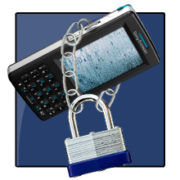 Officer.com recently ran an introductory article about Public Safety using what in the Defense world are referred to as Tactical Unmanned Aerial Vehicles (TUAV). No runway needed describes various applications, which for the most part, are the civilian equivalent of Intelligence, Surveillance, and Reconnaissance (ISR).
Officer.com recently ran an introductory article about Public Safety using what in the Defense world are referred to as Tactical Unmanned Aerial Vehicles (TUAV). No runway needed describes various applications, which for the most part, are the civilian equivalent of Intelligence, Surveillance, and Reconnaissance (ISR).
Experts are repeatedly quoted that the technology not only exists for Public Safety applications, but also is extremely mature. The two main challenges are delivering solutions that are economical enough for cash-strapped civilian agencies, and, of course, FAA regulatory fears about mid-air collisions.
Homeland Security Watch discusses an entirely different challenge to civilian applications in “Controlling domestic UAVs wirelessly through a cellular network: major policy challenges” (click here). Just as their military counterparts are facing a clogged information highway, Public Safety officials must compete with private interests for every bit of the communication spectrum. They recently won a significant victory (Senate Passes Public Safety Spectrum Bill). However, problems are expected to persist, especially with increased use of video streaming and biometrics.
The Homeland Security Watch article cites various options for controlling unmanned systems, including cellular networks augmented by mobile ad-hoc networks (MANETs). The author’s own opinion is:
“… small unmanned arial vehicles operating at low altitudes is going to multiply exponentially over the next few years over our states and cities. Assigning each an IP address and managing them through existing and augmented wireless infrastructure is the only manageable path.”
An intresting and detailed overview, worth checking out.



